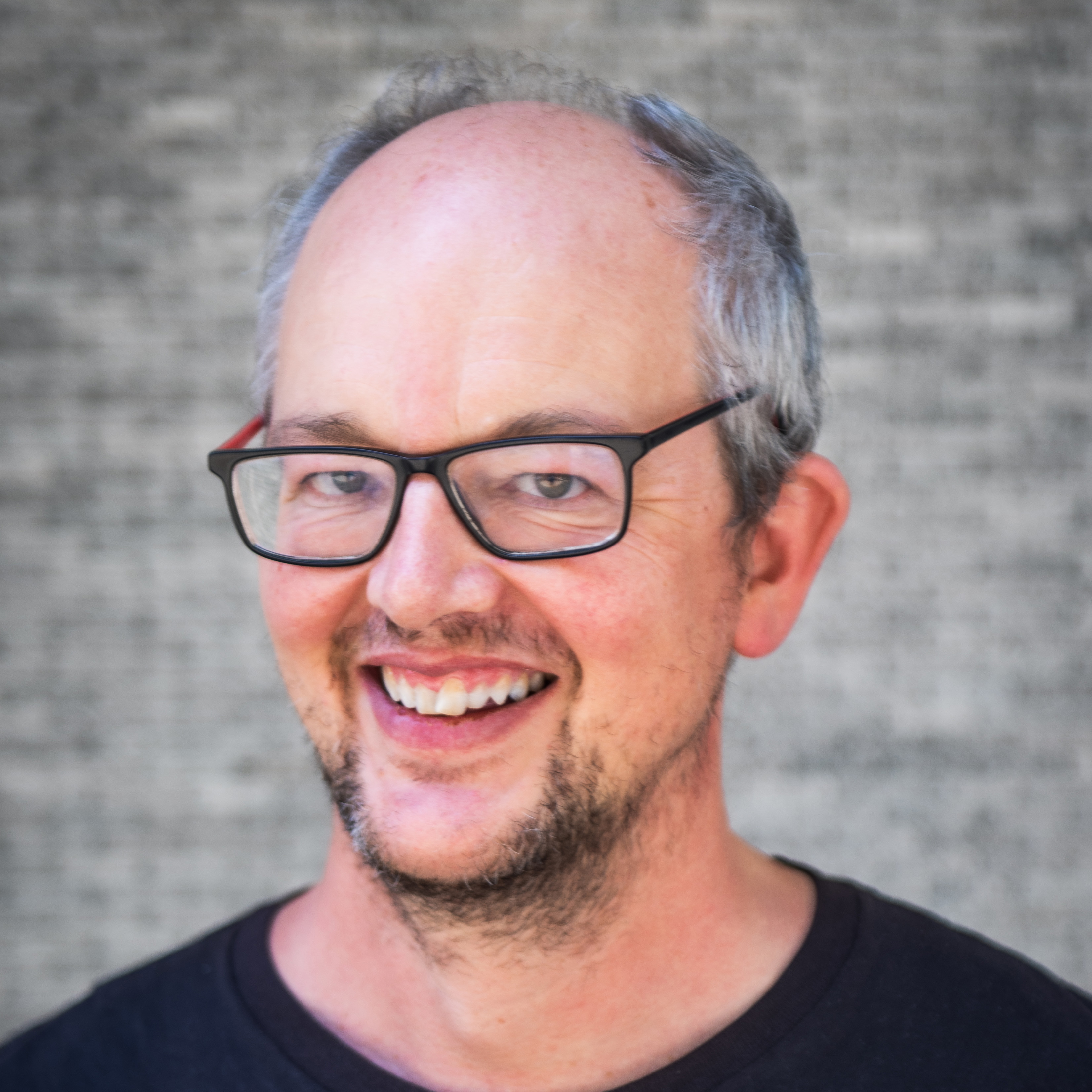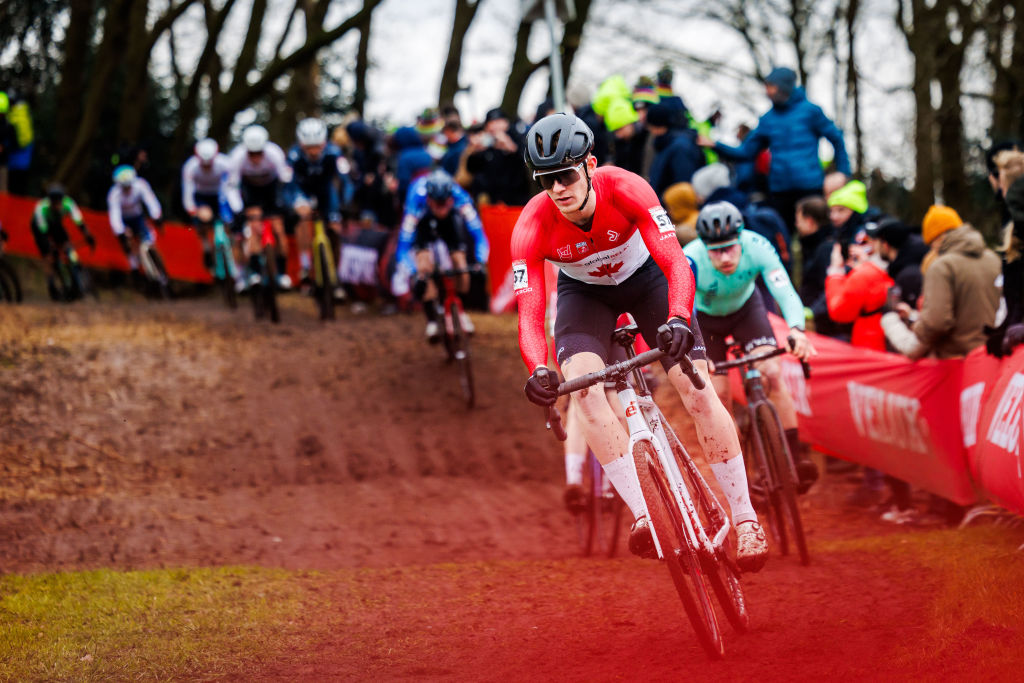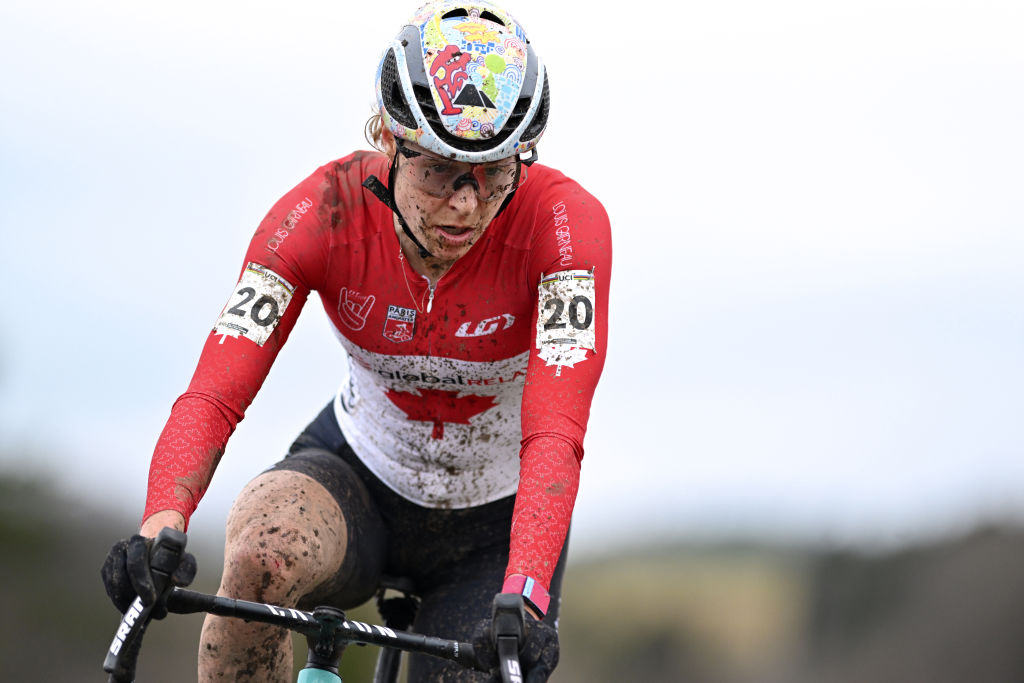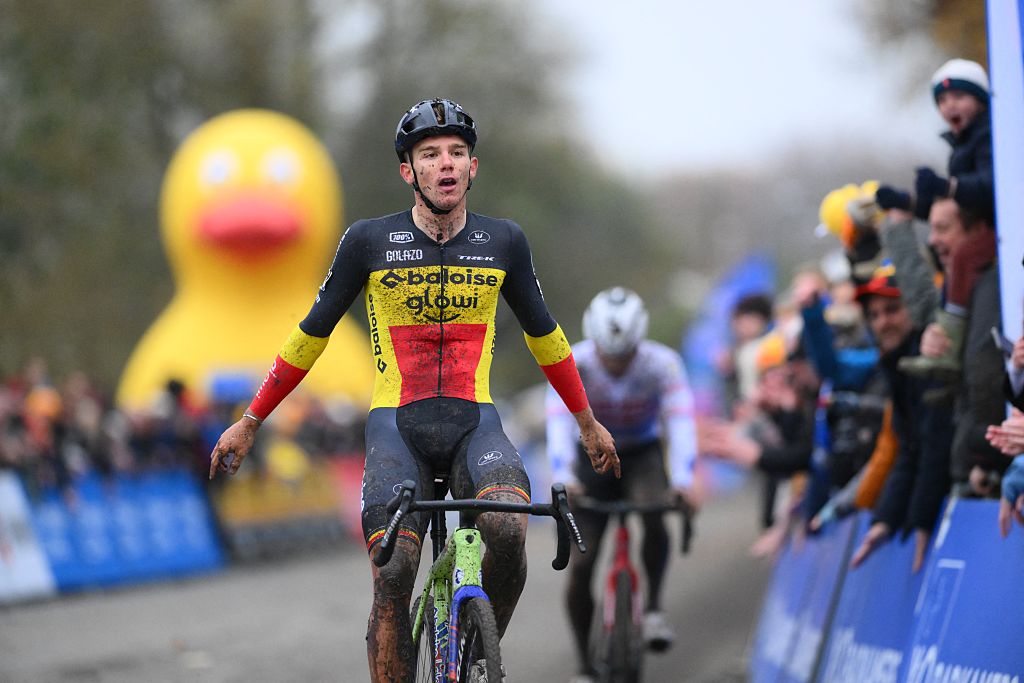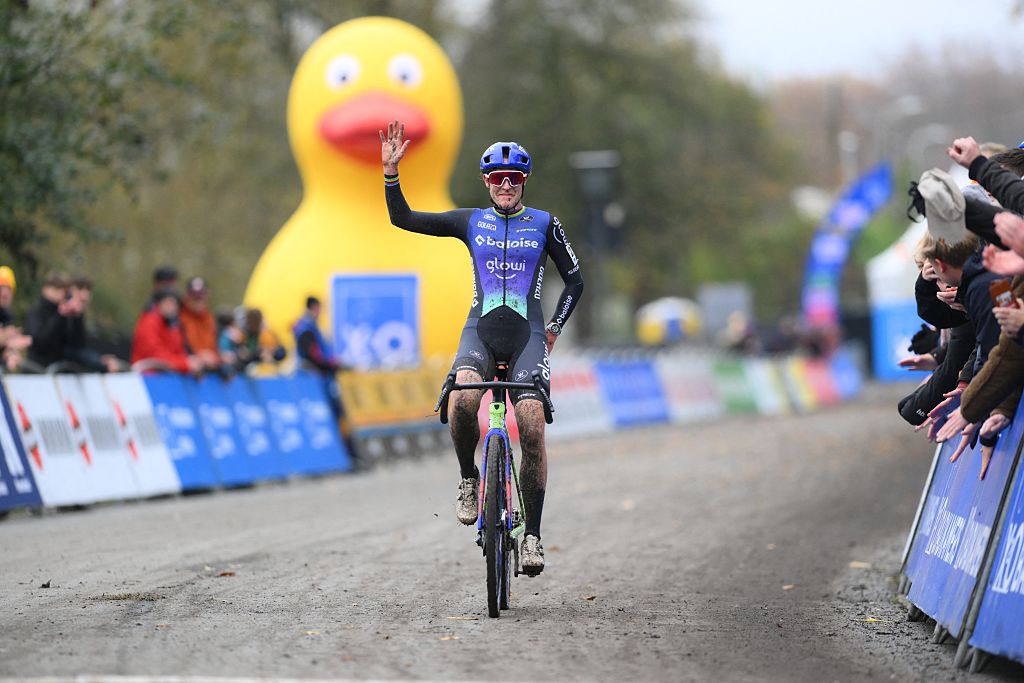Vuelta a España stage 20 preview: 'Harder than the Angliru' - ultra-steep Bola del Mundo summit to provide definitive GC verdict
Race returns to mountain top finish west of Madrid for first time in 13 years
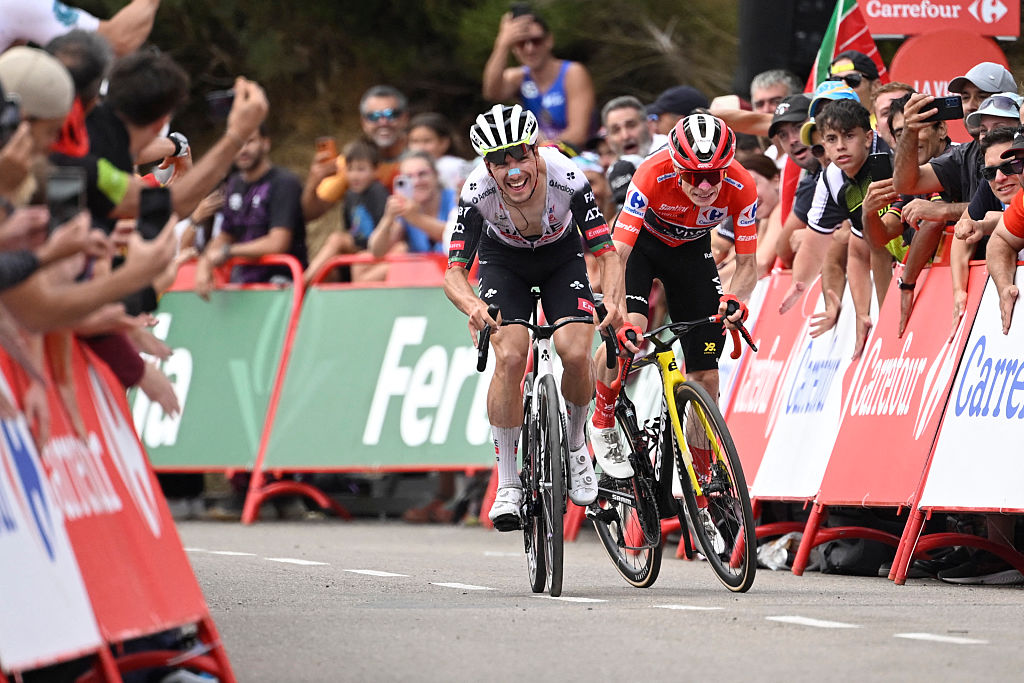
If things go ahead as planned - and for reasons everybody knows, that's far from a given in this year's Vuelta a España - the race is set for a gripping last mountain top finale on Saturday at La Bola del Mundo.
From the summit of the 2,261 metre-high hors categorie ascent, the four huge Torres KIO skyscrapers that tower over the northern end of Madrid are clearly visible, as is the huge dome of polluted air, nicknamed la boina (the bonnet), that clings indefinitely round the Spanish capital.
But with the 12.3-kilometre La Bola del Mundo yet to be tackled, the battle to stand tallest on the winner's podium on Sunday evening in Madrid's central Paseo de la Castellana boulevard is far from over, and with the question of this weekend's pro-Palestine protests also hanging ominously in the atmosphere, even more so.
After stage 19, just 44 seconds separate João Almeida (UAE Team Emirates-XRG) from race leader Jonas Vingegaard (Visma-Lease a Bike), the standout favourite for the Vuelta since before it left Turin three weeks ago. Neither rider was in particularly stellar shape on the Vuelta's previous summit finish of Alto de El Morredero, and up to now, barring Vingegaard's surprise attack on stage 9, precious little has divided them on the ascents in general.
However, Almeida's narrow gains in the shortened time trial of Valladolid on Thursday have breathed some fresh life into the dying flames of his campaign to oust Vingegaard from the top spot overall, basically in the shape of 'what ifs' had the TT remained its original length.
In real terms, the Portuguese racer's ten-second gain - four of which were subsequently lost when Vingegaard stole a march on Almeida in an intermediate sprint on Saturday - is not much of a difference. But in a Vuelta overly sated on a diet of multiple shortened stages, incessant disruptions and a GC battle with little notable changes, Almeida's TT gain was enough to revive the hope that on la Bola del Mundo something like a normal bike race will once again break cover.
On the plus side, stage 20 itself is very well designed for a great GC battle, with the difficulty in climbs increasingly steadily as an arduous 164-kilometre day in the saddle unfolds. Two category 3 ascents early on in the sierras of Madrid, just west of the capital, should see a break of the day take shape. But the subsequent presence of the category 2, Alto del León at km 50, will form the first opportunity for GC contenders to begin to observe any late weaknesses in their opponents to try to exploit in the category 1 and hors category that follow
The latest race content, interviews, features, reviews and expert buying guides, direct to your inbox!
One added twist to the plot is that stage 20 is not all about the Almeida v. Vingegaard face-off, either. Somewhere on the 4,200 metres of vertical climbing on Saturday, a definitive verdict will also emerge on who will take third in Madrid, barring major surprises, most likely either Tom Pidcock (Q36.5) or Jai Hindley (Red Bull-Bora-Hansgrohe).
Pidcock, looking for his first-ever Grand Tour podium, currently has the upper hand by 37 seconds on fourth-placed Hindley. But the Australian, keen to refresh his Grand Tour credentials after two difficult years, is anything but inexperienced in such last week battles - getting rid of Richard Carapaz on the last mountainous day of the Giro d'Italia was how he won the 2022 race, after all.
Furthermore, Hindley has the best mountain support possible, too, of any of the top contenders, in the shape of 21-year-old teammate Giulio Pellizzari, currently running fifth on GC and a stage winner this week at El Herredero. So Pidcock will likely face a major battle in his own right on the road to la Bola del Mundo, and it'll be intriguing to see how the two separate duels at the very top of the classification affect each other, too.
It also helps fuel the current somewhat sluggish levels of anticipation for Saturday, that in the history of the Vuelta, the sierras of Madrid are littered with stories of last-minute drama and changes of GC fortune. The 2015 ousting of Tom Dumoulin from the top spot by Fabio Aru is the most recent, but the infamously successful 1985 ambush by Pedro Delgado on leader Philippa York also took place in the same mountain range.
Not only that, the Navacerrada, tackled twice in the 2025 Vuelta stage 20 - first as a category 1 ascent and then as the base of the final ascent to Bola del Mundo, has its own special place in these past unexpected changes of leader, too. In 2003, ONCE rider Isidro Nozal, visibly ill, lost so much time on the Navacerrada to Roberto Heras he then could not hold onto the top spot in the final uphill time trial in nearby El Escorial the next day.
It's true that Nozal's defeat was almost completely overshadowed by the post-stage expulsion of his sports director, Manolo Saiz, from the race, after Saiz used his team car to drive against and corner a TV motorbike for allegedly obstructing the rider. But given that happened too on the Navacerrada, it all contributed to the legendary potential for the Sierras of Madrid to provide major last-minute upsets and surprises.
Will Vingegaard suffer the same fate as Nozal on Saturday on the Vuelta's double ascent of the Navacerrada? Indeed, the stage will first go up the northern approach road the much harder side known as the 'siete revueltas' [seven hairpins], and this category 1 standalone ascent will therefore likely not play such a big role in the final outcome as it could.
However, the race's subsequent second 'easier' ascent of Navacerrada, when the well-surfaced southern approach road forms the base of the Bola del Mundo, does include a kilometre-long straightaway at the top that constantly hits 10%. Certainly coming so late in the day, that particular segment will be a major challenge - and perhaps a good point for Almeida or Vingegaard to attack? - before the race moves onto the uppermost part of the climb itself.
Regardless of what has happened before, like the Angliru, the only other hors category ascent of this year's Vuelta, the last part of the Bola Mundo is by far the most difficult. The last climbing challenge of this year's race will be a real brute, given it's a single vehicle-width three-kilometre concrete track with ramps of up to 23 percent, zigzagging relentlessly up to the lone refuge hut and TV antennae that normally are the only signs of human activity on its windswept, empty summit.
For environmental reasons, the public will not be allowed on the last part of the ecologically important climb, and directors cannot follow the riders right up to the summit, either, briefly recreating the same kind of vacuum-like atmosphere of the empty, fan-free ascents in the 2020 pandemic Vuelta. But with or without fans, the road to Bola del Mundo winds all the way up to 2,247 metres above sea level; nonetheless, the highest point of this year’s Vuelta. And while that high altitude could represent an additional challenge to the riders, former pro Joaquim Rodríguez tells Cyclingnews, there will be other even greater obstacles for them to overcome.
Third in the Bola del Mundo in 2010, when he finished third overall, Rodríguez points out that "it's a climb of two halves, the first part up to Navacerrada, which I remember from the 2008 Vuelta time trial up there is generally fairly steady. Then, when it goes onto the last part, it's a very different story, a real sting in the tail. Basically, it's like riding up a wall."
"The cement surface is really broken up, so it's hard to get a real pace - but trying to do that is a real key to doing well, as I found out myself. The first time up in 2010, I wasn't sure how to tackle it, and it felt like it went on forever, while the next time we went up there, in 2012, I knew what kind of rhythm to take, and I felt like I could have kept going for a few more kilometres."
"It's actually even harder than the Angliru," Rodriguez says, "because the tarmac and cement is so ripped up it's really tricky to find a rhythm, even if it's not as steep and that won't help Almeida for sure."
"In fact, my favourite remains Jonas Vingegaard for that last day. He's not going to have too many problems to stay in the lead. Because the problem Almeida will have is that It's so hard that like the Angliru, I can't see how anybody can really get much time on anybody else.
One key early indication of how the race will play out, Rodríguez says is if UAE opt to put all their eggs in the Almeida-GC basket and keep a high pace all day, or if, as on other stages, they opt to let different riders like Marc Soler and Juan Ayuso up the road.
Their tactics will only be unveiled sometime on Saturday afternoon, of course, in what is expected to be sunny, dry weather - perfect for a bike race. But either way, the final climbing stage of 2025 is the only opportunity that Almeida now has to turn the tables on Vingegaard, whether the Bola del Mundo suits him or not.
It will also be interesting to see what attitude a team like Red Bull take when it come to tiring out Tom Pidcock before the final ascent - where, on such a steep trail that wouldn't be out of place on an MTB course, the Briton will theoretically be in his element.
But more than Pidcock and Hindley, the crunch part of the GC battle will pivot on what Almeida and Vingegaard are capable of doing, and by this ultra-late point in the game, whatever choices they make or have forced upon them will be definitive. After all, on a narrow, ever-rising single-track ascent like the Bola del Mundo and its stunning views of the last finish line in Madrid at the top, there really is no way back.
Climbs
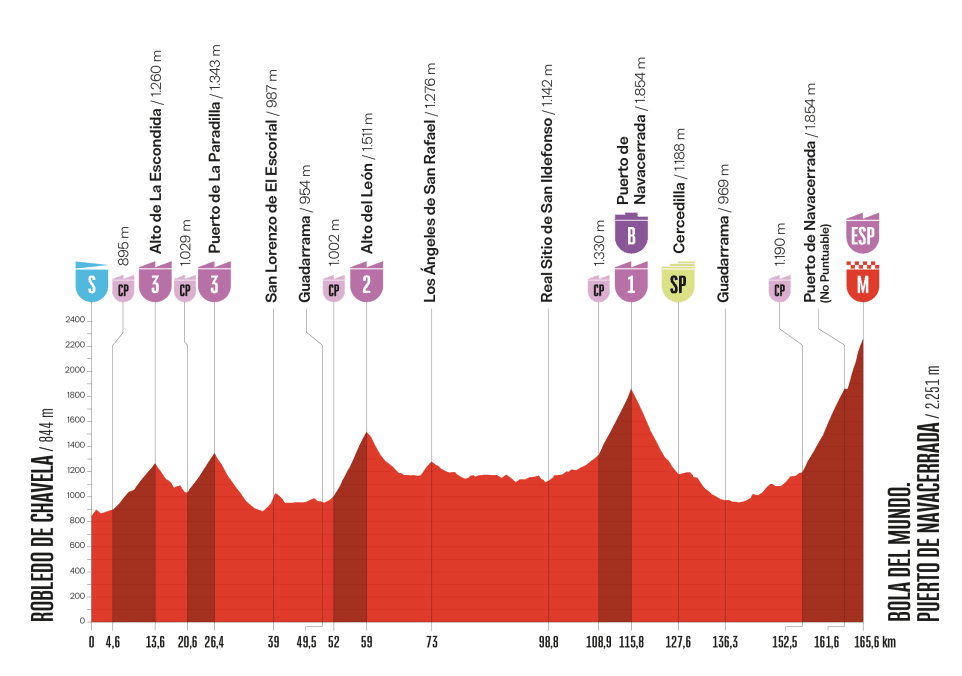
- Alto de la Escondida (cat. 3), km. 13.6
- Puerto de la Paradilla (cat. 3), km. 26.4
- Alto del León (cat. 2), km. 59
- Puerto de Navacerrada (cat. 1), km. 115.8 - time bonus
- Bola del Mundo (ESP), km. 165.6
Sprints
- Cercedilla, km. 127.6
Alasdair Fotheringham has been reporting on cycling since 1991. He has covered every Tour de France since 1992 bar one, as well as numerous other bike races of all shapes and sizes, ranging from the Olympic Games in 2008 to the now sadly defunct Subida a Urkiola hill climb in Spain. As well as working for Cyclingnews, he has also written for The Independent, The Guardian, ProCycling, The Express and Reuters.
You must confirm your public display name before commenting
Please logout and then login again, you will then be prompted to enter your display name.
Latest on Cyclingnews
-
Canadian Cyclocross Championships: Tyler Clark claims elite men's title
Cody Scott second, Émile Perreault third in Lévis -
Canadian Cyclocross Championships: Maghalie Rochette wins elite women's title
Sidney McGill second, Katja Ververk third in Lévis -
X2O Trofee Hamme: Thibau Nys wins Flandriencross after gripping duel with Cameron Mason
Joris Niewenhuis finishes third in Hamme -
Lucinda Brand continues her brilliant run taking a third consecutive victory at the X2O Badkamers race in Hamme
Former world champion, Brand leads the series overall, taking her 50th consecutive podium finish
